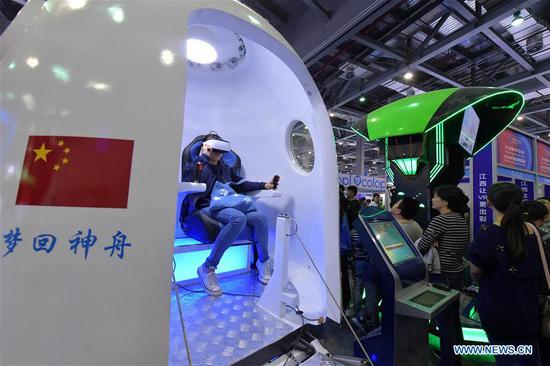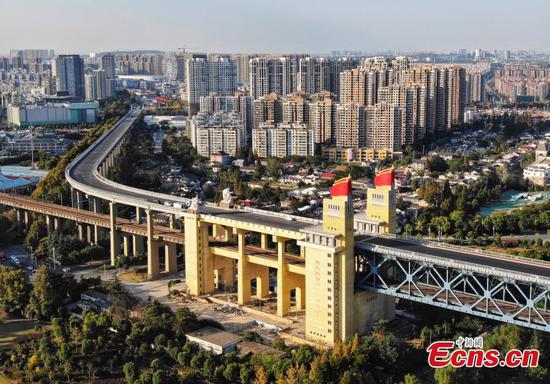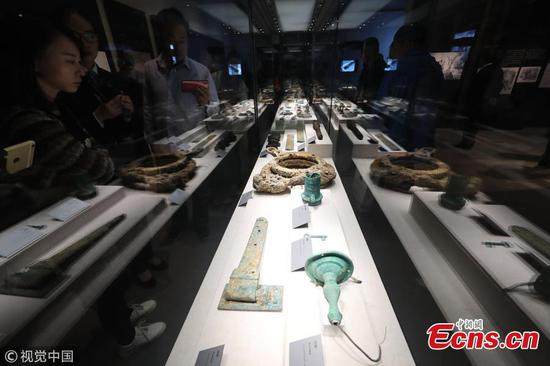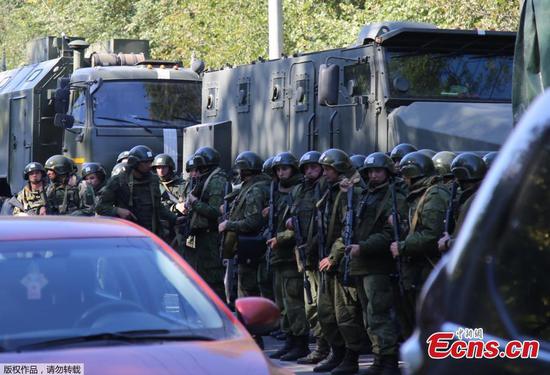City transformed from traditional model to major hub of innovation
Four decades ago, Shenzhen was just a small fishing village adjacent to Hong Kong. Today, the city in southern Guangdong province is the country's high-tech and innovation hub.
It's known as China's Silicon Valley and is the headquarters of internet and telecom giants Tencent and Huawei, thanks to the country's reform and opening-up policy.
With a population of more than 12 million, Shenzhen's rapid growth arose from cultivating emerging industries, including the internet, new-generation information technology, new materials, new energy and biological medicine. Beyond that, energy conservation, environmental protection and the cultural and creative industries have played a key role.
Last year, the added value of emerging industries in Shenzhen amounted to about 918 billion yuan ($132 billion), increasing 13.6 percent compared with a year earlier and accounting for 40.9 percent of the city's GDP, according to official statistics.
The bioindustry saw the most robust growth, with added value expanding 24.6 percent year-on-year, followed by the internet industry at 23.4 percent.
The metropolis is now home to more than 11,000 national high-tech enterprises.
"Shenzhen's high-tech industry has already formed an integral industry chain. It has an internationalized supporting system at its back," said Huang Dinglong, chief executive of artificial intelligence company Malong Technologies.
The local government has attached great importance to research and development. Last year, Shenzhen's investment in R&D reached over 90 billion yuan, accounting for 4.13 percent of its GDP, on par with Israel and South Korea, which lead in that category.
Local policies have provided a sound breeding ground, allowing high-tech enterprises to grow in a sound environment, said Yan Qin, general manager of Direct Genomics, a company specializing in genomics.
"They don't have an extra burden, as the local government offers great support to them - for example, helping them with initial funding and understanding government policies."
In addition, with its proximity to the international financial center of Hong Kong, Shenzhen has also developed strengths in capital, with a large number of small enterprises being able to secure venture capital at early stages, Yan added.
Over the 40 years since the reform and opening-up policy was launched, Shenzhen has been an economic miracle by global standards, with its GDP growing at more than 20 percent a year on average.
In 1980, it was chosen as China's special economic zone, which entitled it to more market-oriented and flexible economic policies.
Since then, Shenzhen's economy has seen explosive expansion, from under 200 million yuan to 2.2 trillion yuan in 2017, which is more than 10,000 times bigger and on course to surpass Hong Kong.
Qu Jian, vice-president of the China Development Institute, said the city has transformed from a traditional economy reliant on resources and labor to a modern economy fueled by innovation.
"The reason so many technologically innovative enterprises have been created in Silicon Valley is that talent across the world is flocking into the area," Huang said. "It's the same for Shenzhen."
Yan, meanwhile, said local high-tech enterprises have a shortage of professional managers, who he believes play a vital role.
"Shenzhen needs to introduce more professional managers who have worked at Fortune 500 companies to improve management so that the city's high-tech industry can achieve better growth," he said.


















































